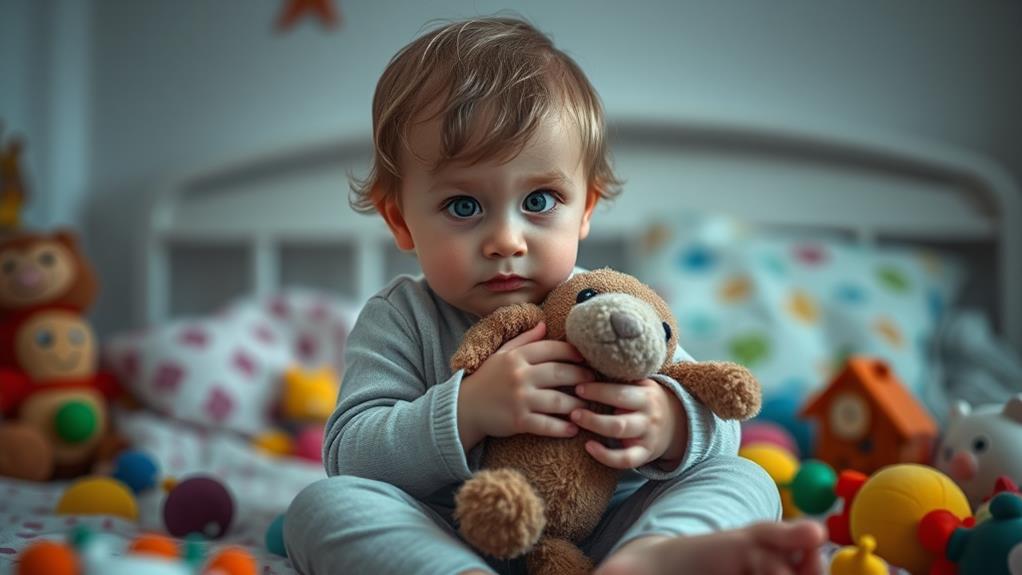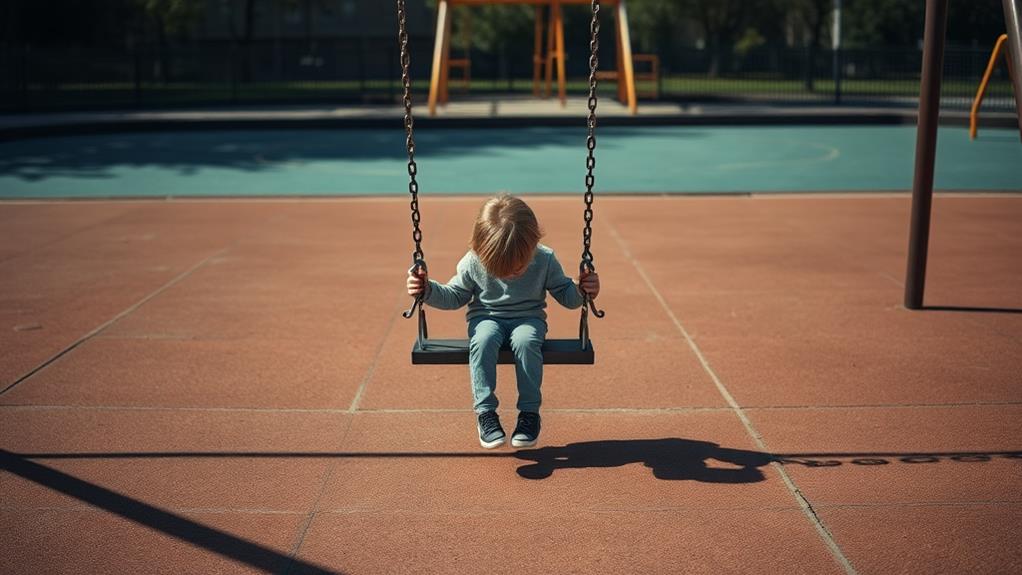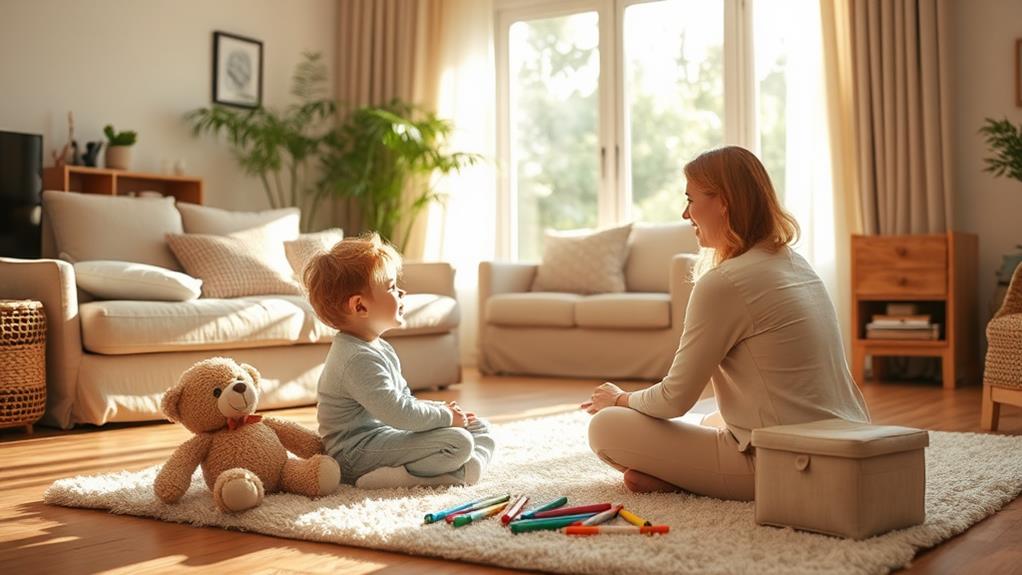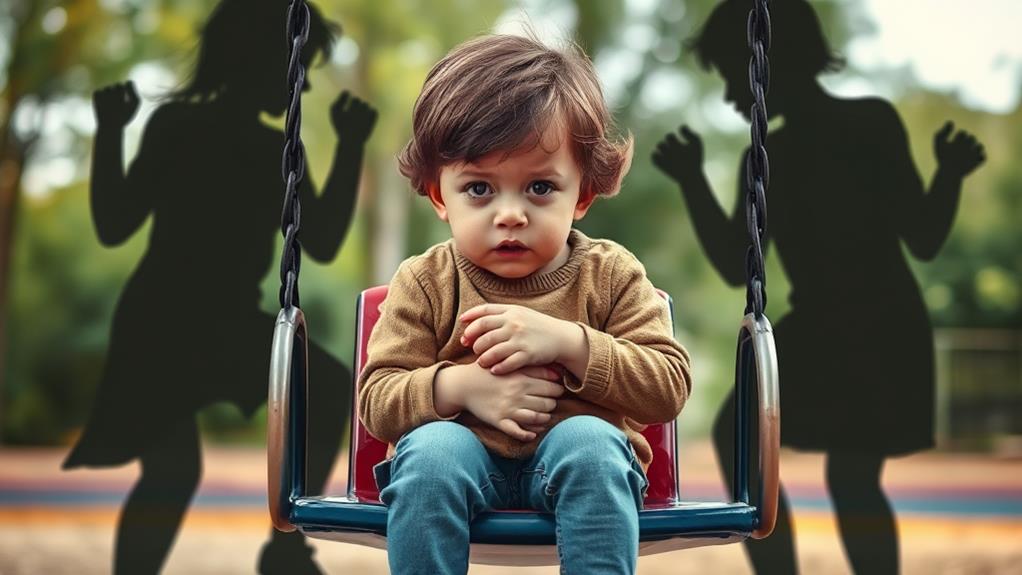Panic Attacks in Children: 13 Warning Signs and How to Cope
When it comes to panic attacks in children, recognizing the warning signs can make all the difference in how you respond. You might notice excessive worry, physical symptoms like a racing heart, or even changes in their behavior. These signs can be subtle but significant, often leading to distress if left unaddressed. Understanding how to cope, from fostering open communication to employing relaxation techniques, can be invaluable. But what should you do when these strategies aren't enough? Exploring the common triggers and effective interventions might just provide the clarity you need.
Understanding Panic Attacks

Panic attacks in children can be overwhelming and frightening, both for the child and their caregivers. You might notice that your child suddenly feels intense fear, even when there's no clear reason for it. It's like their body is playing tricks on them!
During a panic attack, they might experience a racing heart, shortness of breath, or even dizziness. Imagine feeling like a rollercoaster is going full speed, but there's no ride in sight!
Understanding panic attacks is essential for helping your child feel safe and secure. You should know that these attacks can strike at any moment, often catching kids off guard. They might feel like they're losing control or worry they're having a heart attack. It's important to reassure them that they're not alone in this.
When your child has a panic attack, it's helpful to stay calm and supportive. Encourage deep breathing together, as it can really help slow down their racing thoughts.
Common Triggers for Children
Many factors can trigger panic attacks in children, and recognizing these can make a big difference. For starters, big life changes like moving to a new school or welcoming a new sibling can be overwhelming.
Even exciting events, like a birthday party, can cause anxiety. You might think it's all fun and games, but those loud noises and crowds can be a lot to handle.
Also, stress from school can sneak up on them. If they're worried about grades or friendships, it can create a perfect storm of anxiety.
And let's not forget about social situations! Some kids feel nervous speaking in front of others or making new friends.
Sometimes, even certain activities can trigger panic, like sports or public performances. If your child has a history of being shy, these situations can feel like climbing Mount Everest!
Lastly, health issues, like asthma or allergies, can lead to panic attacks. If they struggle to breathe, it's only natural for them to feel scared.
Sign 1: Excessive Worry

One key sign that your child might be struggling with anxiety is excessive worry. If you notice your child fretting over little things, like school projects, friendships, or even what to wear tomorrow, it could be a red flag. Worry is normal, but when it takes over their thoughts, that's when you should pay attention.
Think about it: if your child spends more time worrying than enjoying their day, it's time to step in. You might hear them say things like, "What if I fail?" or "What if my friends don't like me?" These thoughts can spiral and make them feel trapped in a cycle of anxiety.
You can help by encouraging open conversations. Ask them about their worries and validate their feelings. Let them know it's okay to feel anxious sometimes. You might even share a funny story about a time you worried unnecessarily—humor can lighten the mood!
Also, remind them they're not alone in this. Many kids experience these feelings too. By showing your support and understanding, you can help your child manage their worries and feel more at ease.
Sign 2: Physical Symptoms
Pay attention if your child experiences a rapid heartbeat or feels shaky. They might even sweat more than usual, and that can be alarming.
Sometimes, kids might feel extra tired or restless, like they've had too much sugar but without the fun of candy! If your little one is suddenly avoiding activities they once loved, it could be tied to these physical symptoms.
You know your child best, so trust your instincts. If these signs pop up frequently, talk with them about how they feel.
You can also consider reaching out to a healthcare professional. They can help you understand what's happening and offer support.
Sign 3: Avoidance Behavior

Avoidance behavior is often a clear sign that your child is struggling with anxiety or panic attacks. You might notice them steering clear of places, people, or activities they once enjoyed, like avoiding birthday parties or skipping school. This change can make you worry, but it's important to understand what's happening beneath the surface.
When your child starts dodging certain situations, it's usually their way of trying to manage overwhelming feelings. They might think, "If I don't go, I won't feel anxious!" Unfortunately, this can create a cycle where anxiety grows stronger. Imagine if every time you faced a challenge, you backed away—pretty soon, you'd be living in a tiny bubble!
To help your child, gently encourage them to face their fears, but don't rush them. Celebrate small victories, like stepping into a crowded room for just a minute or chatting with a friend.
Remind them that it's okay to feel nervous; everyone does at times. You're their support system, so be patient and understanding as they navigate these feelings. Together, you can break the cycle of avoidance and help them feel more confident in facing the world!
Sign 4: Changes in Sleep
Sleep patterns can provide important clues about your child's emotional state, especially when they're dealing with anxiety or panic attacks. If you notice your child tossing and turning, or perhaps they're suddenly afraid of the dark, it might be more than just a phase. Changes in sleep can signal that something's bothering them.
Maybe they're having trouble falling asleep or waking up frequently during the night. You might even find them sneaking into your bed more often. This behavior can be a sign that they're feeling anxious or scared.
On the flip side, some kids may oversleep, using those extra Z's as an escape from their worries.
It's essential to pay attention to these changes. After all, a well-rested child is usually a happier child!
Try to create a calming bedtime routine, like reading a favorite book or playing soft music. This can help your child feel safe and secure.
Sign 5: Irritability or Anger

Often, you might notice that your child seems more irritable or angry than usual. This sudden change can be alarming. You may find them snapping at family members or throwing tantrums over small things. It's like they've got a storm cloud hovering over their heads.
These feelings can be linked to anxiety or panic attacks. When kids feel overwhelmed, their emotions can sometimes bubble over, causing frustration and anger. They mightn't even know why they're upset! Instead of blaming them for their mood, try to understand what's going on inside their heads.
You can help by creating a safe space where they can express their feelings. Ask open-ended questions like, "What's bothering you today?" or "How can I help?" Sometimes, just knowing that you're there for them can make a huge difference.
Also, consider helping them find healthy outlets for their feelings. Activities like drawing, writing, or even physical exercise can help release that pent-up energy.
Sign 6: Difficulty Concentrating
When a child is grappling with anxiety or panic, you might notice they struggle to focus on tasks or conversations. It's like their brain is buzzing with a million thoughts, and they can't catch one. You may see them staring blankly at homework or zoning out during a chat, which can be frustrating for both of you.
Difficulty concentrating can also show up in school. They might forget instructions or misplace their schoolwork because they're too preoccupied with their worries. You could even see their grades slipping, and that can add more stress to an already tough situation. It's tough to learn when your mind feels like a butterfly, flitting from one concern to another!
To help, create a calm and quiet study space. Break tasks into smaller bits, so they don't feel overwhelmed. Encourage short breaks—sometimes, a quick dance party in the living room can work wonders! Remind them it's okay to ask for help when they need it.
Sign 7: Social Withdrawal

One common sign of panic attacks in children is social withdrawal. If you notice your child suddenly avoiding friends, skipping playdates, or not wanting to join group activities, it could be a red flag. Kids often feel overwhelmed in social situations, and they might think everyone is judging them. It's like being on stage without a script—really stressful!
When they start pulling away from their usual crowd, it's essential to pay attention. They might feel anxious about what others think, or they could be scared of a panic attack happening in public. To help, gently encourage them to talk about their feelings. Sometimes, just knowing that you're there to listen can make all the difference.
Try to create a safe space for them to express themselves. Maybe suggest a small gathering with just one or two trusted friends. This way, they can ease back into social settings without feeling overwhelmed.
Sign 8: Clinginess or Separation Anxiety
Clinginess or separation anxiety can be a telling sign that your child is struggling with panic attacks. If your little one suddenly insists on sticking to you like glue, or cries when it's time to say goodbye, it might be more than just a phase. Kids can feel overwhelmed by the thought of being away from you, and that's where the anxiety kicks in.
You might notice they cling to your leg at the grocery store or refuse to play in the yard alone. It can be exhausting, right? You love your child and want to comfort them, but their need for constant reassurance can wear you out.
Sometimes, this clinginess can show up in unexpected ways, like throwing a tantrum when it's time to go to school. They might fear something bad will happen if they're not with you, which can lead to panic.
You might find it hard to figure out what's going on in their mind. Remember, it's not just about wanting your company; it's about feeling secure. Understanding this can help you support them through these tough times and create a safe space for them to express their feelings.
Coping Strategy 1: Open Communication

Open communication is essential for helping your child cope with panic attacks. When your child feels safe talking to you, it makes a world of difference. Start by asking open-ended questions like, "How did that make you feel?" This invites them to share their thoughts without pressure.
Remember, it's not about solving every problem right away; it's about listening.
Sometimes, your child mightn't have the right words. That's okay! You can encourage them by sharing your own feelings. For example, you could say, "I feel anxious sometimes too, like when I've to speak in front of a crowd." This shows them they're not alone.
Also, be mindful of your tone. A calm, friendly approach can make your child feel more at ease. Kids often pick up on your emotions, so staying relaxed can help them relax too.
Lastly, don't forget to check in regularly. A simple "How's your day going?" can open the door to deeper conversations.
Coping Strategy 2: Breathing Techniques
During moments of heightened anxiety, breathing techniques can be a powerful tool for your child to regain control. When panic strikes, they might feel like a balloon that's about to pop, but teaching them to breathe can help deflate that tension.
Start with a simple technique: the 4-7-8 method. Encourage your child to inhale deeply through their nose for four seconds, hold their breath for seven seconds, and then exhale slowly through their mouth for eight seconds. It's like blowing out birthday candles—slow and steady!
Practicing this a few times can help calm their racing heart and clear their mind. You can also try making it fun! Challenge them to see who can take the longest, slowest breath. You'll be surprised how a little competition can lighten the mood!
Remind your child that they can use these techniques anywhere: at school, during a sports game, or even at home. Breathing is like a secret superpower—they can tap into it whenever they need to feel more grounded.
Seeking Professional Help

When panic attacks become frequent or overwhelming for your child, seeking professional help can be an essential step. It's like calling in the superheroes when things get tough! A therapist or counselor who specializes in anxiety can provide the tools your child needs to manage these feelings. They'll help your child understand what's happening during a panic attack and teach them ways to cope.
You might feel a bit apprehensive about finding help, and that's totally normal! Start by talking to your child's pediatrician, who can recommend a professional. It's important to guarantee that the therapist is a good fit for your child, so don't hesitate to ask questions about their experience and approach.
Therapy can be a safe space where your child can express their feelings without judgment. They'll learn coping strategies, like grounding techniques or positive self-talk, which can be super helpful during tough moments.
Plus, it's a chance for your child to realize they're not alone in this. With the right support, they can overcome these challenges and feel more confident!











Post Comment